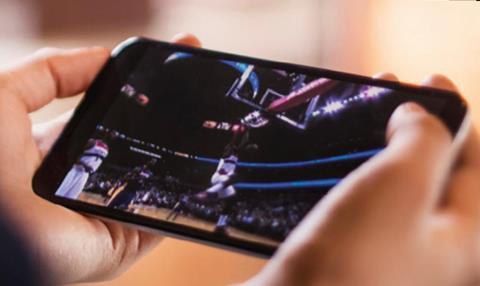Not all video players are equal - smartphones out-perform smart TVs for consistent high-quality video streaming

An extensive video streaming study by cloud-delivery provider Akamai has revealed that different devices – smartphones, large-screen smart TVs, set-top-boxes and desktop PCs – deliver different levels of video quality, even when tested under identical conditions.
On a smartphone, the connection speed required to successfully stream ‘complex’ HD content – such as sport and high-action footage – is 2-4Mbps, whereas a large-screen smart TV requires a minimum of 6Mbps for the same content, with a desktop PC needing around 5Mbps.
Smartphones also provide a consistent high-quality video stream even when faced with challenging network conditions. Smart TVs, on the other hand, buffer the playback after a sustained decline in the network connection. The set-top box copes better under the same conditions, providing acceptable image quality throughout.
“Our research showed not all video players are equal – certain devices such as smartphones handle network uncertainty very well and don’t buffer, but with embedded devices in smart TVs, there’s a lot of inconsistency.
Some enable quick start of playback but can’t handle irregularities in the network connection,” said Akamai director of product marketing, media solutions, Ian Munford.
“Our research showed not all video players are equal – certain devices handle network uncertainty very well, but with embedded devices in smart TVs, there’s a lot of inconsistency.”
Akamai teamed up with digital testing company Eurofins for the research, which also tested to see if different genres of content demand different bit rates to create what viewers consider excellent image quality.
Straightforward, low-movement talking-head shots were first streamed on a large-screen smart TV, followed by a drama with limited action and muted colours, and finally a hard-to-encode underwater scene with lots of colours and shimmering light.
The genre of content had a notable impact on the network connection speed required.
The genre of content had a notable impact on the network connection speed required. For the lower-complexity material streamed in consistent, uninterrupted network conditions, the TV displayed excellent HD quality, with a connection speed of just 2Mbps. The drama footage, however, needed at least 3Mbps to achieve the same quality, while the more complex underwater scenes needed a minimum bit rate of 6Mbps.
Akamai said that viewers used to HD TV broadcasts expect similar, if not better, quality from OTT providers, and those that fail to provide this across different genres of programming may find “increased churn from unhappy viewers and advertisers”.
“OTT providers can potentially reduce the number of bitrate profiles they need to create.”
The company said the measurements typically used by OTT providers to assess video quality today – which includes rebuffering ratios (the ratio between how long content is rebuffered and the total duration of the video), the video start time and video start failures – should be updated to more closely align with the methodology used in its research, to provide a fuller picture of video quality.
It said: “Through an evidence-based understanding of the likely impact of genre, device and bit rate on the viewer’s experience of a particular video file, OTT providers can potentially reduce the number of bitrate profiles they need to create and store for each video asset, generating significant savings.”
The study didn’t assess connection speeds required to successfully stream different genres of 4K UHD content, but Munford told Broadcast: “4K streams generally demand in the range of 10-20Mbps. We’ve seen 4K become much more commonplace and pervasive, but HD streams are still the main high-quality video traffic.”





























No comments yet